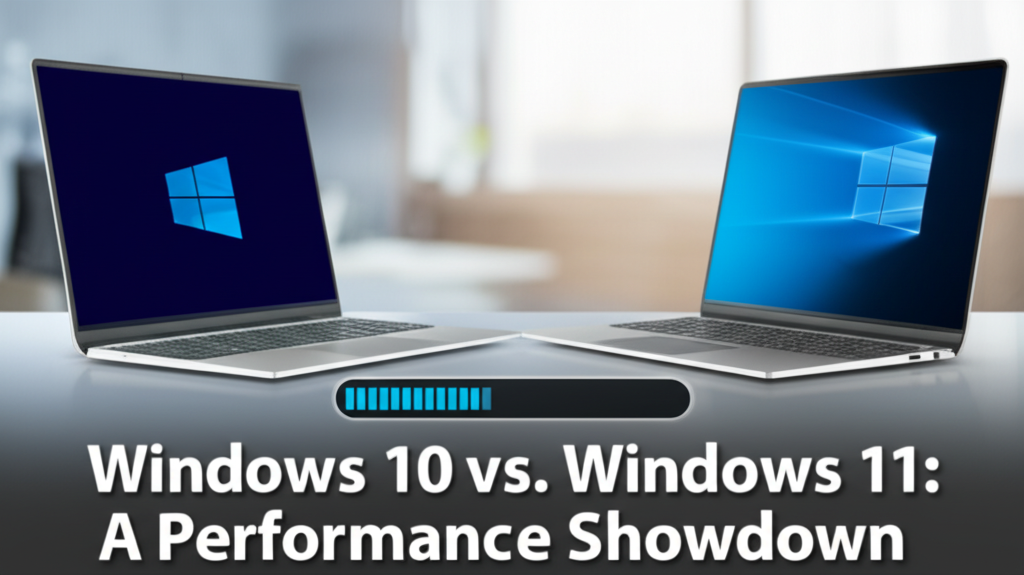Introduction
In the world of computing, the operating system (OS) plays a crucial role in determining performance, usability, and features. With the release of Windows 11, many users are left wondering whether it’s worth upgrading from Windows 10. Each OS has its unique strengths and weaknesses, and understanding these can help you make an informed decision. This article will provide a comprehensive comparison between Windows 10 and Windows 11, focusing on performance, usability, and productivity.
Why Performance Matters
Performance affects how smoothly your computer runs, influencing your productivity, gaming experience, and software usability. A faster OS means quicker boot times, smoother multitasking, and less waiting for applications to load. In this guide, we’ll cover everything you need to know about comparing these two operating systems, including step-by-step troubleshooting, common issues, and advanced tweaks that can enhance your experience with either Windows version.
Step-by-Step Performance Comparison
1. System Requirements
Windows 10 vs. Windows 11
Before diving into performance tests, check if your PC meets the system requirements:
-
Windows 10 Requirements:
- Processor: 1 GHz or faster with at least 2 cores on a compatible 64-bit processor
- RAM: 1 GB (32-bit) or 2 GB (64-bit)
- Storage: 16 GB for 32-bit OS or 20 GB for 64-bit OS
- DirectX 9 graphics device with a WDDM 1.0 driver
- Windows 11 Requirements:
- Processor: 1 GHz or faster with at least 2 cores on a compatible 64-bit processor
- RAM: 4 GB
- Storage: 64 GB or larger
- TPM version 2.0
- DirectX 12 compatible graphics / WDDM 2.x
How to Check System Requirements
-
For Windows 10:
- Press
Windows + Rto open the Run dialog. - Type in
winverand hit Enter. - A window will show your Windows version and build.
- Press
- For Windows 11:
- Press
Windows + R. - Type
msinfo32and hit Enter. - Check "System Model" and "System Type" for info.
- Press
2. Performance Benchmarks
Benchmarks provide a detailed comparison of system performance under controlled conditions.
-
Startup Time:
- Windows 11: Generally boots faster due to optimized processes.
- Windows 10: Slower startup times compared to Windows 11.
- Application Launch Time:
- Windows 11: Applications open quicker due to improved memory management.
- Windows 10: Slower launch times can be experienced frequently.
Testing Startup Time
- Restart your computer.
- Press the
Watch Timerwhen the BIOS screen disappears. - Stop the timer when the desktop icons appear.
- Compare results between OS installs.
3. Usability Features that Affect Performance
Windows 10 Features:
- Task View: Offers virtual desktops and multitasking.
- Snap Assist: Simplifies window management.
Windows 11 Features:
- Snap Layouts: Advanced window management for multi-monitor setups.
- Improved Touch Gestures: Enhanced for touchscreen devices.
Navigating Usability Features
Using Snap Layouts in Windows 11
- Open multiple applications.
- Hover over the maximize button on a window.
- Select your desired layout to arrange your screens.
4. Built-In Troubleshooting Tools
Both operating systems come with built-in troubleshooters to fix common performance issues.
Using the Troubleshooter in Windows 10 and 11:
- Go to Settings (
Windows + I). - Click on Update & Security.
- Select Troubleshoot.
- Choose the option relevant to your performance issue.
Common Errors and Quick Fixes
-
Slow Performance:
- Solution for both: Disable startup programs using Task Manager.
- High CPU Usage:
- For Windows 10: Check for Windows updates or antivirus scans running.
- For Windows 11: Review background processes in Task Manager to identify the culprit.
5. Advanced Tweaks for Power Users
Optimization Techniques:
-
Disable Visual Effects:
- Navigate to System Properties → Advanced System Settings → Performance Options → Adjust for best performance.
- Gaming Performance:
- Windows 11 has an improved gaming mode. Enable it via Game Mode settings for optimized performance while gaming.
Shortcut for Disabling Visual Effects
- Press
Windows + Sto open the search bar. - Type
Advanced system settings. - In Performance Options, select Adjust for best performance.
Alternative Software Recommendations
If you’re considering alternatives for productivity or specific features:
-
Microsoft Office vs. LibreOffice:
- Windows 10 and 11 users can benefit from the free open-source LibreOffice suite.
- Task Managers:
- Consider using software like Process Explorer for detailed task management.
Summary Checklist
For Windows 10 Users:
- Check and meet system requirements.
- Utilize Task View and Snap Assist effectively.
- Regularly run troubleshooters for performance issues.
For Windows 11 Users:
- Take advantage of Snap Layouts and improved gaming features.
- Make use of built-in optimization tools and settings.
- Regular updates are crucial for maintaining performance.
Conclusion
In summary, both Windows 10 and Windows 11 offer unique features that cater to different types of users. Windows 11 leans towards enhanced performance with better startup times, application management, and improved usability. As such, considering performance metrics can help you decide the best OS for your needs.
Regardless of which operating system you choose, following best practices, utilizing built-in tools, and exploring advanced features can significantly enhance your user experience. Whether you’re a beginner or a power user, this guide provides the foundation you need to maximize performance effectively.
Final Thoughts
Being aware of the strengths and weaknesses of your chosen OS will make it easier to resolve issues and optimize performance. Always keep an eye out for updates and improvements to ensure you’re getting the best from your system. Happy computing!

